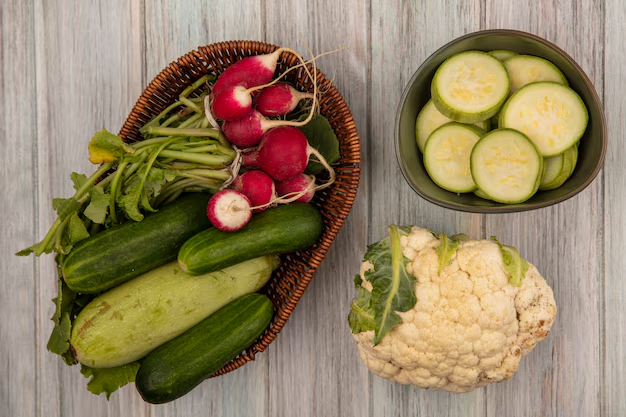How to Keep Your Celery Fresh in the Fridge: A Comprehensive Guide
Celery is a popular vegetable known for its crisp texture and refreshing flavor, often used as a snack, in salads, or as an ingredient in various dishes. However, like all fresh produce, celery has a finite shelf life, and improper storage can lead to wilting or spoilage. In this guide, we'll explore how long celery can last in the refrigerator and share tips to maximize its freshness.
🥬 Celery Shelf Life: What to Expect
Fresh celery, when stored correctly, can generally stay crisp and delicious in the refrigerator for about one to two weeks. However, several factors can influence its longevity, including:
- Storage method: How you store your celery can drastically impact its shelf life.
- Quality at purchase: Fresh celery with vibrant green stalks and firm leaves are likely to last longer.
- Refrigerator temperature and humidity: Maintaining the right environment is crucial.
Here's a more detailed look at how you can optimize celery storage and some common preservation tips to keep it fresh longer.
Ideal Storage Conditions for Celery
Keeping Celery Crisp
To keep your celery crisp and extend its shelf life, consider these storage methods:
Wrap in Aluminum Foil: Wrapping celery in aluminum foil allows ethylene gas, which causes spoiling, to escape while keeping enough moisture to maintain crispness.
Use a Sealed Plastic Bag: If foil isn’t available, a sealed plastic bag can work almost as well, though it might trap more moisture.
Temperature and Humidity
For optimal freshness:
Temperature: Store celery in the refrigerator crisper drawer set to a temperature around 32-36°F (0-2°C).
Humidity: Maintain a high-humidity setting to prevent celery from drying out. Many crisper drawers have adjustable vents to control humidity.
Preventing Wilting and Spoilage
Celery is prone to losing moisture and becoming limp if not stored correctly. Here are some steps to minimize wilting:
Avoid Washing Before Storing: Excess moisture can cause celery to become mushy, so wash it just before use.
Check Regularly: Inspect celery every few days for signs of spoilage, like slimy stalks, and remove any affected parts promptly.
Understanding Freshness: Signs and Tips
Recognizing Fresh Celery
When buying celery, look for:
- Vibrant Color: Bright green leaves and stalks.
- Firmness: Stalks should be firm and snap easily when bent.
- No Browning or Wilting: Avoid stalks with browning edges or limp leaves.
Signs of Spoilage
Even with the best efforts, celery eventually spoils. Be on the lookout for:
- Softened Stalks: A sign of excess moisture and bacterial growth.
- Discoloration: Yellowing or browning indicates deterioration.
- Unpleasant Odor: Fresh celery has a mild, fresh aroma; off-smells suggest spoilage.
If you notice these signs, it’s best to discard the affected parts to prevent spoilage from spreading.
Enhancing Shelf Life Beyond Refrigeration
Freezing Celery
For long-term storage, freezing is an effective option:
Blanch First: Briefly boil celery stalks for about 3 minutes, then plunge them into ice water to stop the cooking process. This preserves color and texture.
Pack and Freeze: Dry the stalks thoroughly, then place them in airtight bags. While frozen celery won’t be suitable for raw snacks, it’s excellent for cooked dishes.
Using Celery in Different Forms
Dehydrated Celery: Reducing water content makes celery easier to store. Use a food dehydrator to dry celery pieces, which can later be used in soups or casseroles.
Celery Salt and Powder: Grinding dried celery can enhance shelf life and serve as a seasoning alternative.
👩🍳 Practical Tips for Culinary Uses
Celery is versatile in the kitchen, so even if you have excess, there are countless ways to incorporate it into meals:
Soups and Stews: Provides a savory, aromatic base.
Smoothies and Juices: Combined with fruits and greens, celery creates refreshing beverages.
Stir-fries and Casseroles: Adds crunch and flavor to a variety of dishes.
If you suspect your celery might soon spoil, these recipes are great solutions to prevent waste.
Quick-Reference Table: Celery Storage Tips 🍽️
| Tip | Benefit |
|---|---|
| Wrap in Aluminum Foil | Extends freshness, allows ethylene escape |
| Store in Crisper Drawer | Maintains ideal humidity & temperature |
| Avoid Washing Before Storage | Prevents excess moisture & spoilage |
| Check Regularly | Removes spoiled parts, extends usability |
| Blanch Before Freezing | Retains color, extends shelf life |
While celery doesn’t last indefinitely, these practices ensure you can enjoy it at its freshest for as long as possible. By understanding optimal storage conditions, recognizing signs of spoilage, and exploring new culinary uses, you can minimize waste and maximize flavor, ensuring your celery remains a staple in your kitchen. Whether you're using it raw or incorporating it into various dishes, these techniques help maintain its place in your pantry as a nutritious and versatile ingredient.
